Getting Started with the Works Library
In this blog post, we’ll tell you a bit more about how the “Works” works, and how it can save you time in defining processes and routing in your layouts.
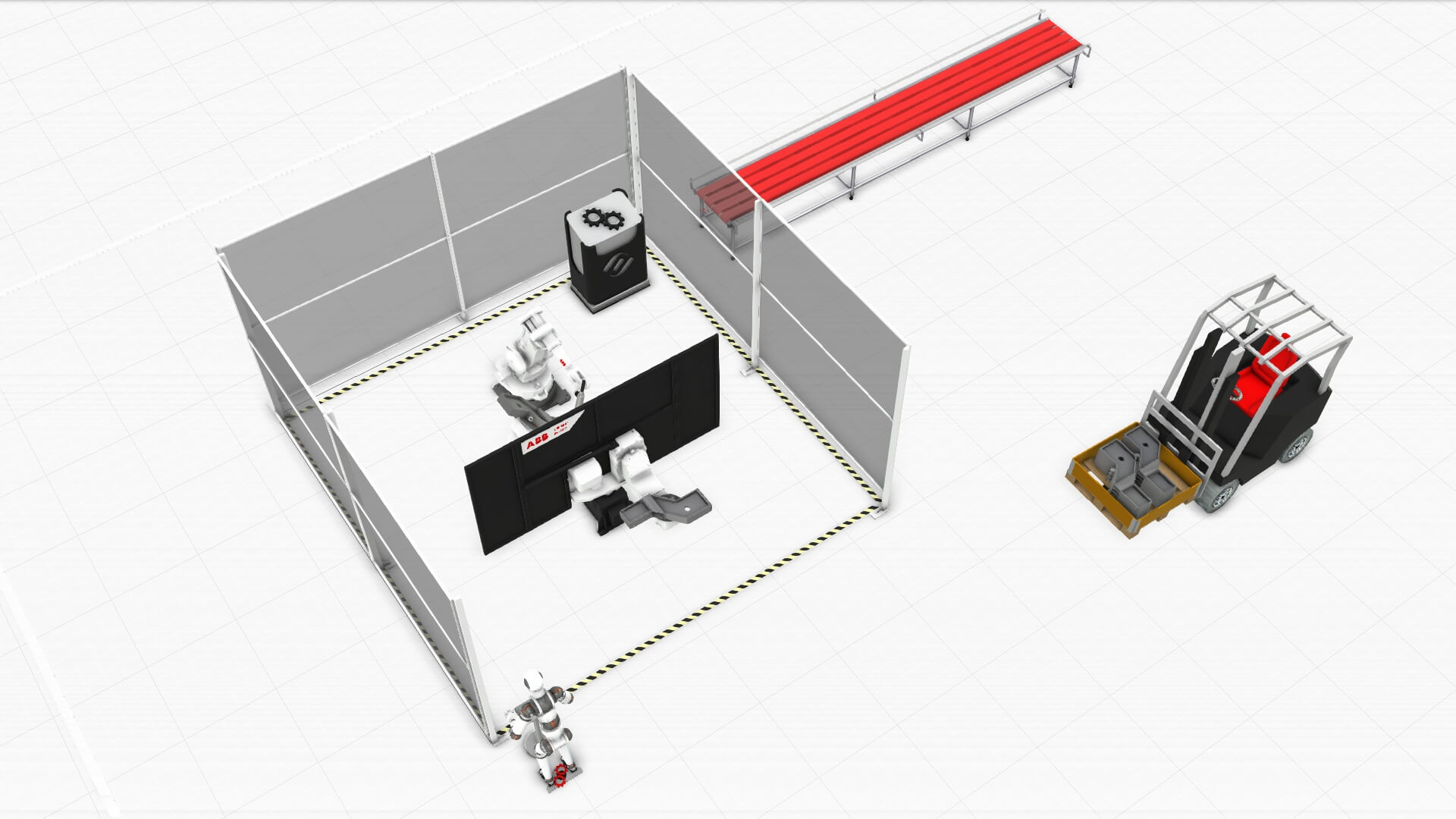
The Works library is back in Visual Components 4.0. The Works consists of a small but very flexible collection of components that simplify the process for defining complex processes and routing logic in layouts. In this blog post, we’ll tell you a bit more about how the “Works” works, and how it can save you time in defining processes and routing in your layouts.
What is the “Works”?
The name “Works” comes from “metal works”, or metalworking. Even in today’s increasingly automated manufacturing environment, metalworking is still a very labor-intensive process. Metalworking factories of all sizes employ skilled laborers in everything from machining and assembly to finishing and inspection. While manufacturing is becoming increasingly automated, human labor still plays an important role in many factories, and it’s important that this is factored into your production designs and processes.
The Works library makes it easier and faster for users to simulate complex production processes by eliminating the need to program or script complex simulation logic and actions. This is particularly helpful when designing and simulating assembly and manufacturing processes, which can be quite challenging.
The Works library originally consisted of a library of tools to help simulate manual processes common in metalworking: transport of materials, assembly, use of tools and machines. It has since expanded to include logistic conveyor systems, robotics, and other resources like AGVs.
How does the “Works” Work?
Complex production processes can generally be broken down into many individual processes, and each of these individual processes broken down further into a list of tasks. Each of these tasks is an action executed in that process, such as “process”, “merge parts”, “feed part to next process”, or “run sequence”. Factory workers follow similar task lists or procedures on the factory floor.
Components in the Works library have this task list structure built into them, so you can define and assign actions to be taken relative to them, task by task.
Components available in the Works library can be classified as one of the following:
- Works Process component: This type of component allows the user to create simple and complex process definitions, task by task. A task can be self-contained or require the use of resources, machines, inputs and outputs, and other processes. Examples of tasks include “calling a resource to bring one or multiple parts” or “the merging of parts into an assembly”.
- Resources:
- Humans: The human operator “Anna”, can be used as an operator together with the other components in the Works library. Tasks such as “Process” or “Transport” can be assigned to the human resource from a Works Process component.
- Robots: A robot controller together with any of 1,200+ robots that are available in the Visual Components eCatalog, can be used as a resource. The robot can act as an automatic or semi-automatic resource to accomplish material handling and other processing tasks in a similar way as the human resource would.
- Work Task Control: This component acts as a communication hub between other Works components. It allocates resources to the process points that are calling them to perform tasks.
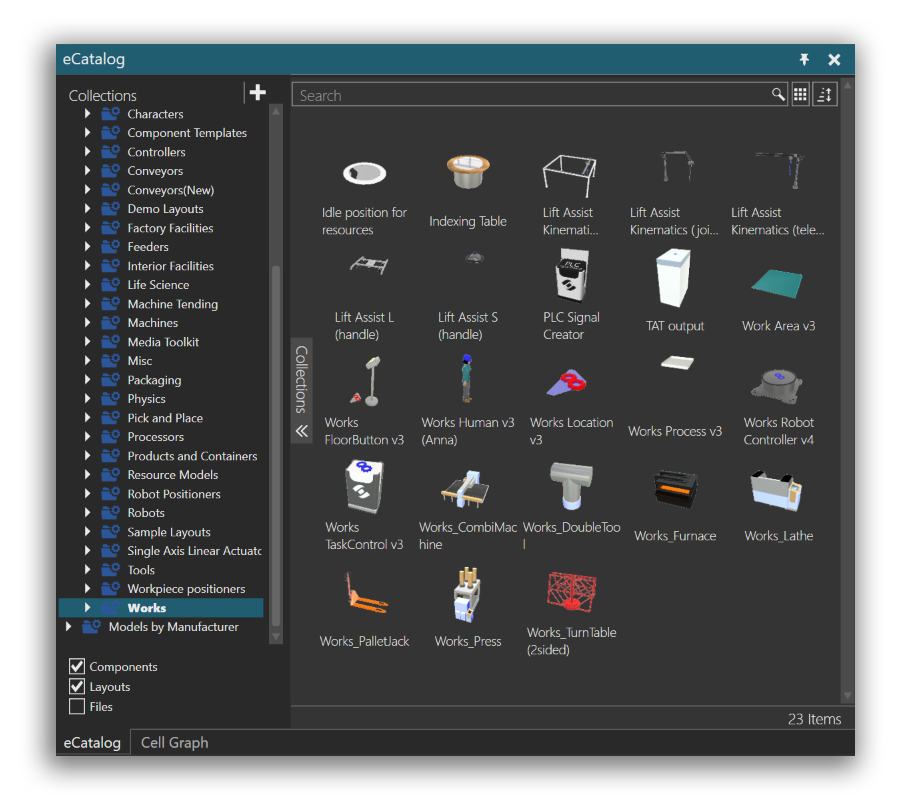
Benefits of the Works Library
The main benefit of the Works library is that it simplifies how tasks and processes are defined in Visual Components. The workflow for defining and managing tasks doesn’t require any knowledge of Python; however, task lists created with Works can still be easily modified via Python if desired.
Works components are also very flexible and versatile, and can be adapted for many other types of layouts and processes. We have customers that have completed complex simulation projects exclusively using Works components or slightly edited components from the Works Library. Another added benefit: Works components are automatically set to generate statistical data during simulation.
Checkout Visual Components Academy for more information about getting started with Works. If you’re interested in how you can use Visual Components to design your next manufacturing project, not matter how complex, contact us to schedule a demo!
Further reading
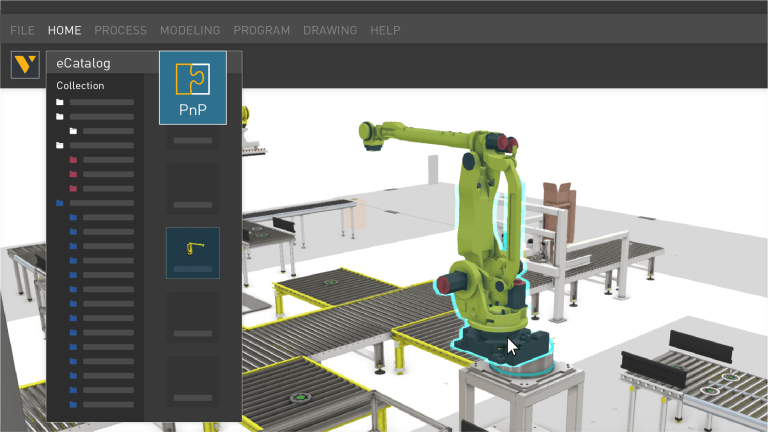
Leveraging simulation for factory layout design
Explore how discrete event simulation and digital twin technology play crucial roles during the ideation and planning phases of factory layout design. Our software simplifies the design process, providing accurate...
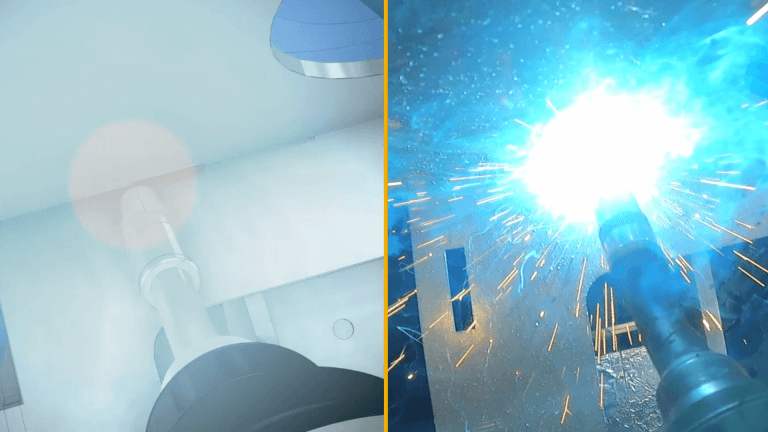
Robot offline programming (OLP): the complete guide (with examples)
This is your complete and comprehensive guide to offline robot programming (OLP). After introducing the topic, it addresses common misconceptions, the problems it resolves, benefits, and real-life example of its...
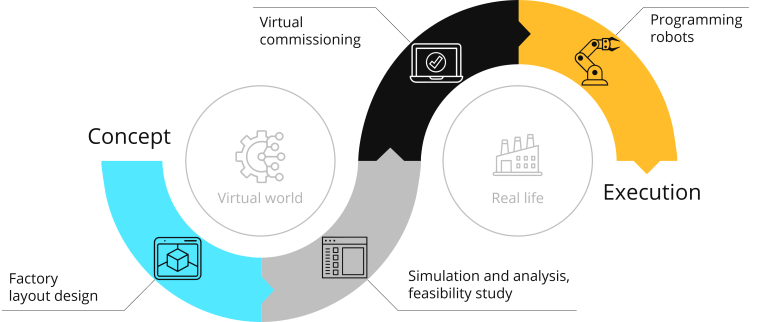
Manufacturing simulation: bring your projects from concept to reality
Manufacturers that commit to the digital transformation inherent in Industry 4.0 will reap the rewards of higher production efficiencies and faster project execution. Together, these will drive growth and profitability...